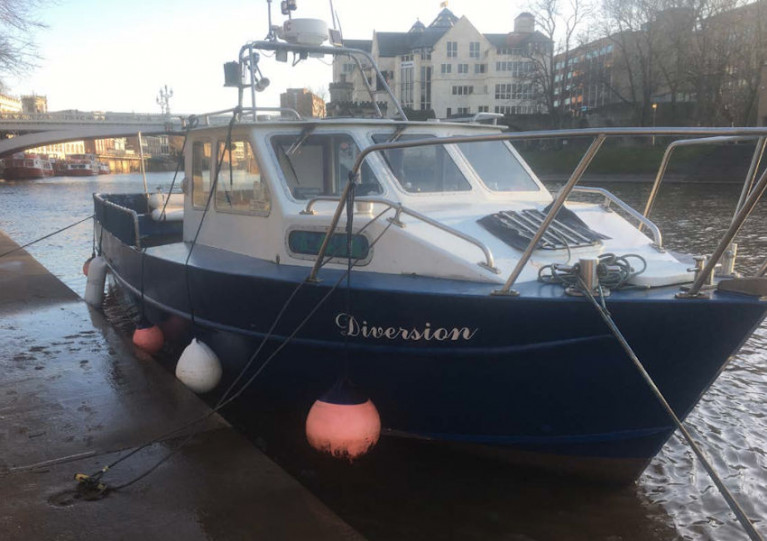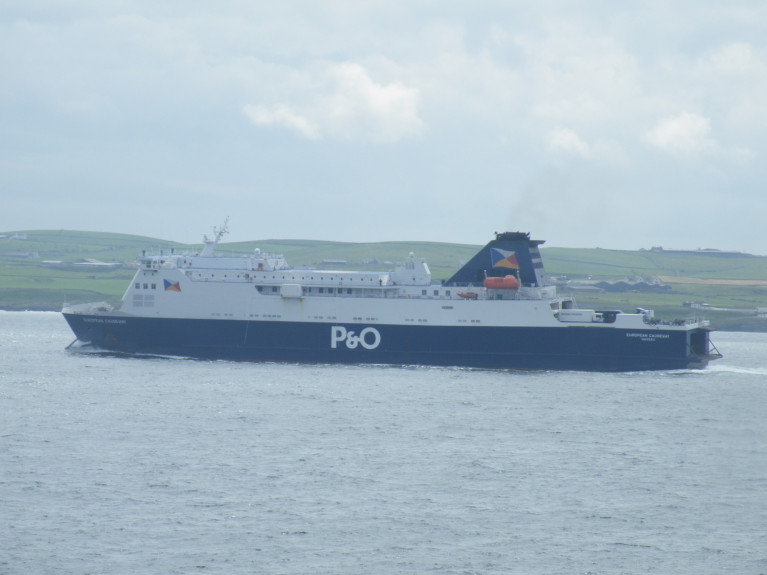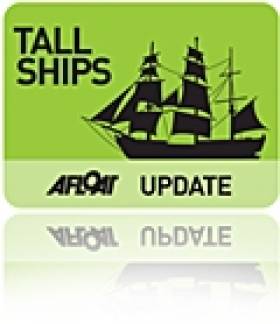Displaying items by tag: MAIB
UK Agency Issues RIB Safety Warning After Serious Passenger Injury
The UK’s Marine Accident Investigation Branch (MAIB) has urged owners of small passenger vessels such as RIBs to review their operations and procedures in line with current safety guidance.
Its warning comes after an incident in June involving a RIB used on a sea safari, where a passenger suffered a spinal injury that left them paralysed from the waist down.
Twelve passengers had boarded the RIB and, once it was clear of the jetty, the two crew gave them a safety briefing and instruction on the wearing of lifejackets.
The RIB then proceeded out to sea and was increasing speed in choppy sea conditions when it encountered a steep-sided wave. The boat fell off the wave and slammed violently into the trough, dislodging the passenger from a seat at the forward end of the boat.
The MAIB’s investigation identified that there is a significantly higher risk of spinal fractures to people seated in the front area of RIBs, regardless of speed.
MAIB’s findings also showed that seated individuals may have little or no understanding of boat movement or how to mitigate its effects.
The RYA website has more on the story HERE.
New Safety Bulletin on Dangers of Carbon Monoxide Poisoning After Deaths of Two Boaters in UK
Britain’s Marine Accident Investigation Branch (MAIB) has published a safety bulletin with lessons learnt from its initial findings into the death of two friends from carbon monoxide poisoning on a boat in York.
The boaters died in December 2019 when the improvised and mismatched cabin heater installation leaked exhaust gas, resulting in lethal amounts of toxic CO being pumped into the cabin near the steering position of their vessel, Diversion, on the River Ouse.
Leaking gas and the fact that there was no working carbon monoxide alarm aboard may have led to the poisoning of the men’s blood systems without them having any warning.
The UK’s Boat Safety Scheme is now urging boaters to read the new bulletin and adopt its safety advice immediately.
It joins the MIAB in asking boaters to install and maintain appropriate appliances safely, and have at least one suitable working carbon monoxide (CO) alarm properly installed aboard — preferably meeting safety standard EN 50291-2:2010.
Both organisations strongly recommend that any fuel-burning systems should also be checked routinely by competent engineers, at least annually, and any faults found addressed without delay.
Boats with permanent accommodation space on the UK’s waterways covered by the Boat Safety Scheme requirements must have at least one suitable carbon monoxide alarm installed.
“Carbon monoxide is a silent killer and staying alive can mean recognising any early signs of poisoning and knowing what to do if CO poisoning is suspected,” said BSS manager Kevin Tyson.
“It’s critical that boaters fully take on board the potential dangers of carbon monoxide. It cannot be seen, smelt, tasted, or felt and in high concentrations, CO can kill without warning, sometimes in only minutes.
“Even breathing-in lower levels of CO over a longer period, can have serious effects such as memory problems and difficulty concentrating,” he added.
Any carbon-fuel-burning appliance or engine can release carbon monoxide. Carbon fuels include but are not limited to diesel, petrol, gas, coal, wood and charcoal.
Drivers of trucks who remain in their cabs on the vehicle deck when a ferry is at sea put themselves and other passengers at risk, reports LloydsLoadingList.
The renewed warning from the UK chief inspector of marine accidents follows a Marine Accident Investigation Branch (MAIB) report into the cargo shift on the P&O Ferries operated ro-ro passenger ferry European Causeway during heavy weather in December 2018.
A statement from the MAIB said that the vessel rolled heavily in very rough seas and very high winds during its voyage from Larne, Northern Ireland to Cairnryan, Scotland.
“The violent motion caused several freight vehicles to shift and nine to topple over. This resulted in damage to 22 vehicles, some damaged severely. “At least six freight vehicle drivers had remained in their cabs on the vehicle decks during the crossing and four were found in cabs of vehicles that had toppled over. One driver was trapped and had to be freed by the emergency services when the ship arrived in Cairnryan.”
The MAIB said that drivers remaining in their vehicles during a ferry passage was “in contravention of international regulations and company policy, was not uncommon and is an industry-wide issue”.
For more on this story, click here
In addition the MAIB's coverage of the incident with a link to a report published here.
The company that runs the Clipper Round The World Yacht Race has called for an independent inquiry into the official investigation of the death of a sailor during the most recent edition of the race.
Clipper Ventures have blasted UK’s Maritime and Coastguard Agency (MCA) and Marine Accident Investigation Branch (MAIB) for “failure of professionalism, impartiality and honesty” in their parallel probes of the overboard incident in the Southern Ocean that cost the life of 60-year-old retired solicitor Simon Speirs on 18 November 2017.
Despite his being tethered to the boat, as Clipper Ventures says, a “freak failure” of a tether safety clip led to Speirs entering the water as he was helping to reduce sail on board the yacht CV30, also known as GREAT Britain, amid increasing winds and sea state.
Spears was recovered from the sea by his fellow crew but could not be resuscitated. He was given a burial at sea the following day.
Clipper Ventures says the conclusions of investigations by the MCA and MAIB into the incident “are the cause of considerable concern” and involve “multiple errors and distortions of the truth” — including a suggestion by an MCA official that a nearby vessel could have taken Speirs’ body home to the UK for burial, when no such vessel existed.
Clipper Ventures also says it suspects that “significant and improper influence was applied to the MAIB investigation by the MCA team” in the bodies’ parallel investigations.
As of 1pm on Sunday 11 August, the MCA and MAIB have not released comment on Clipper Venture’s claims.
Bulletin On Use Of Safety Tethers In Wake Of Clipper Race Tragedy
#ClipperRace - The UK’s Marine Accident Investigation Branch (MAIB) has issued a Safety Bulletin on the “use of safety harness tethers on sailing yachts” following the tragic fatality of GREAT Britain crew member Simon Speirs on Leg 3 of the latest Clipper Race.
Clipper Race management has been working in co-operation with the appropriate authorities to understand the reasons as to why Speirs’ safety tether did not keep him on board.
Race founder and chairman Sir Robin Knox-Johnston said: “We continue to be deeply saddened by Simon’s loss and it is important that we learn the lessons from this tragic accident.
“The Safety Bulletin from the MAIB reinforces what we have said to crew at our Sydney stopover and we have taken steps to prevent a situation like this ever occurring again.
“Sailing is essentially a safe sport but when we see something like this happening, we need to put our heads together to see what we can do to remove the problem.”
As explained at the crew brief in Sydney before the start of Race 6, initial investigations established that the cause of the failure was a very unusual tether clip angle, owing to the clip being pulled sideways against a hard object.
This resulted in the clip failing at well below its straight test strength and measures have been taken to eliminate this risk.
Following further testing of the original tether, which is top of the range, the Clipper Race and the safety committee of each boat unanimously agreed to return to using it at the Sydney stopover subject to these additional measures being put in place.
Sir Robin explained in a recent interview that these measures include wrapping 10mm rope around the cleats to the point that the tether now slides over them, and the Clipper Race will stop at nothing to further improve the safety measures wherever possible across the fleet.
The MAIB has said it will publish a full report on the fatality of Simon Speirs — including all identified contributing factors — on completion of the investigation, which is currently ongoing.
Ocean Youth Trust 'Reviews Procedures' in Wake of Lord Rank Sinking
Following the sinking of Ocean Youth Trust's (OYT) Lord Rank on June 8th and the UK's Marine Accident Investigation Board's subsequent examination, OYT has taken 'a number of actions to ensure the future safe operation' of its vessels. This includes 'a review of its procedures and their implementation on board', according to an MAIB report HERE.
The report says The Lord Rank was engaged in a charity fund-raising event last June 8 and was scheduled to call at a number of Northern Ireland ports. The vessel completed her fund-raising activities at Ballycastle and departed port at 2100 with three crew and three passengers on board. The next port of call was Portrush, a passage of about 3 hours under power. No passage planning was undertaken. On clearing the breakwater, the skipper ordered the helmsman to head in a northerly direction. About 10 minutes later he ordered the helmsman to alter course to port and head towards a visual reference point. No further position monitoring was undertaken. The vessel went aground on Carrickmannanon Rock at about 2123. The skipper then broadcast a 'PAN PAN' message on VHF radio that was acknowledged by the Coastguard. A rescue operation involving a helicopter, an inshore lifeboat and an all weather lifeboat ensured that the crew and passengers were landed safely ashore. STV Lord Rank subsequently sank.
The Marine Accident Investigation Branch (MAIB) examines and investigates all types of marine accidents to or on board UK ships worldwide, and other ships in UK territorial waters.
The Chief Inspector of Marine Accidents has written to Ocean Youth Trust Ireland emphasising that 'professional standards need to be maintained at all times'.
The OYT's agm will be held at Balyholme Yacht Club in Bangor, Northern Ireland on October 18th at 7pm.

































































